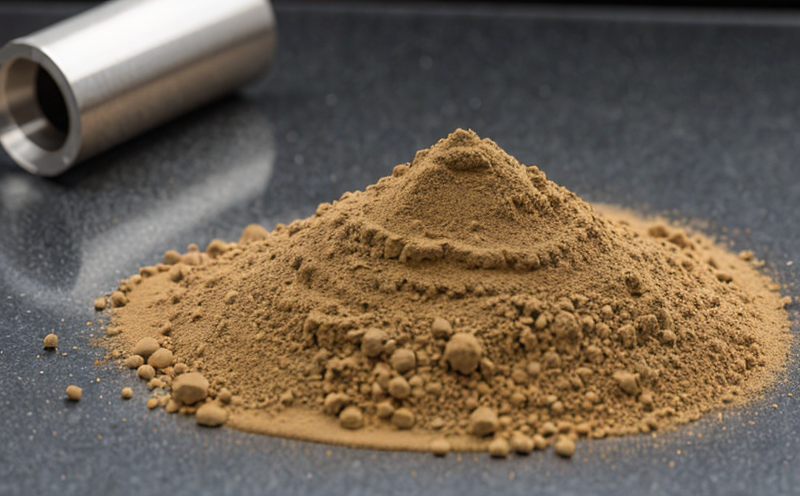ASTM D3418 Transition Temperatures of Polymers Testing
The ASTM D3418 transition temperatures test is a critical procedure in polymer characterization. This test evaluates the temperature at which a polymer undergoes phase transitions, specifically the glass transition temperature (Tg) and crystalline melting temperature (Tm). These properties are essential for understanding how polymers will behave under various environmental conditions.
The ASTM D3418 method is particularly important in sectors such as additive manufacturing and 3D printing. In these industries, raw materials need to perform reliably across a wide range of temperatures. For instance, a polymer used in a high-temperature application like aerospace components must not degrade or lose strength when exposed to extreme heat.
The test involves heating a small sample of the polymer under controlled conditions and monitoring changes in its physical properties. The temperature at which these changes occur is recorded as the transition temperature. This procedure is conducted using differential scanning calorimetry (DSC), an instrument that measures the heat absorbed or released by a material during thermal cycling.
Proper specimen preparation is crucial for accurate results. Samples are typically cut into small, uniform pieces to ensure consistent heating and cooling rates. The test adheres strictly to ASTM D3418 standards, which dictate precise conditions such as the initial temperature, heating rate, and the duration of each temperature hold.
The results from this test provide valuable insights into the thermal properties of polymers, helping researchers and manufacturers make informed decisions about material selection. For instance, a polymer with a higher glass transition temperature is more suitable for applications requiring stability at elevated temperatures. Similarly, knowledge of the melting point can help in designing processes that optimize energy efficiency.
Understanding these transitions also aids in the development of new polymers tailored to specific performance requirements. The test results are essential for quality assurance and compliance with industry standards, ensuring products meet safety and performance expectations.
- Accuracy: Ensures precise measurement of thermal properties.
- Reliability: Consistent results across multiple samples.
- Industry Standards: Compliance with ASTM D3418 ensures credibility in the market.
- Research Support: Provides data for ongoing development and innovation.
In summary, the ASTM D3418 test is indispensable in ensuring that polymers used in additive manufacturing and 3D printing applications perform reliably under diverse conditions. Its role in quality assurance cannot be overstated, as it helps maintain safety and performance standards across various industries.
Scope and Methodology
The ASTM D3418 transition temperatures test is designed to determine the glass transition temperature (Tg) of a polymer. This critical property indicates when the material transitions from a solid state with a rubbery consistency to a more viscous, liquid-like form. The test also evaluates the crystalline melting temperature (Tm), which shows at what point the polymer's crystalline structure melts.
The procedure involves heating a small sample of the polymer in a controlled environment and monitoring the heat flow between the sample and an empty reference cell. The DSC instrument records the temperature changes as the sample is heated, allowing for accurate determination of transition points.
Specimen preparation follows strict ASTM D3418 guidelines to ensure consistency. This includes cutting samples into uniform pieces, ensuring they are free from defects that could affect test results. The testing environment must be carefully controlled to avoid external factors influencing the outcome.
The heating rate is a critical parameter in this test. It is typically set at 10°C per minute, though this can vary depending on the specific requirements of the polymer being tested. After each temperature hold period, data is collected, and the transition temperatures are calculated based on the heat flow measurements.
Acceptance criteria for these tests are defined by ASTM D3418. Results that fall outside acceptable ranges may indicate issues with sample preparation or instrument calibration. Repeatability of results within a laboratory ensures consistent outcomes across multiple tests, enhancing reliability and accuracy.
The test is widely used in sectors such as additive manufacturing and 3D printing where material properties significantly influence the quality and performance of final products. By ensuring accurate measurement of Tg and Tm, this test plays a crucial role in maintaining high standards of product quality and safety.
Why Choose This Test
- Precision: ASTM D3418 ensures precise determination of transition temperatures.
- Reliability: Results are consistent across multiple tests and laboratories.
- Compliance: Adherence to industry standards enhances credibility in the market.
- Innovation Support: Provides data for ongoing research and development.
- Quality Assurance: Ensures that materials meet performance and safety requirements.
- Cost-Effective: Prevents costly errors by identifying material issues early in the process.
- Regulatory Compliance: Meets regulatory standards for product approval and certification.
The ASTM D3418 transition temperatures test is a cornerstone of quality control in polymer testing. Its precision and reliability make it an essential tool for ensuring that polymers used in additive manufacturing and 3D printing applications perform as expected under various environmental conditions. By choosing this test, you ensure that your materials meet stringent standards and are suitable for their intended uses.





